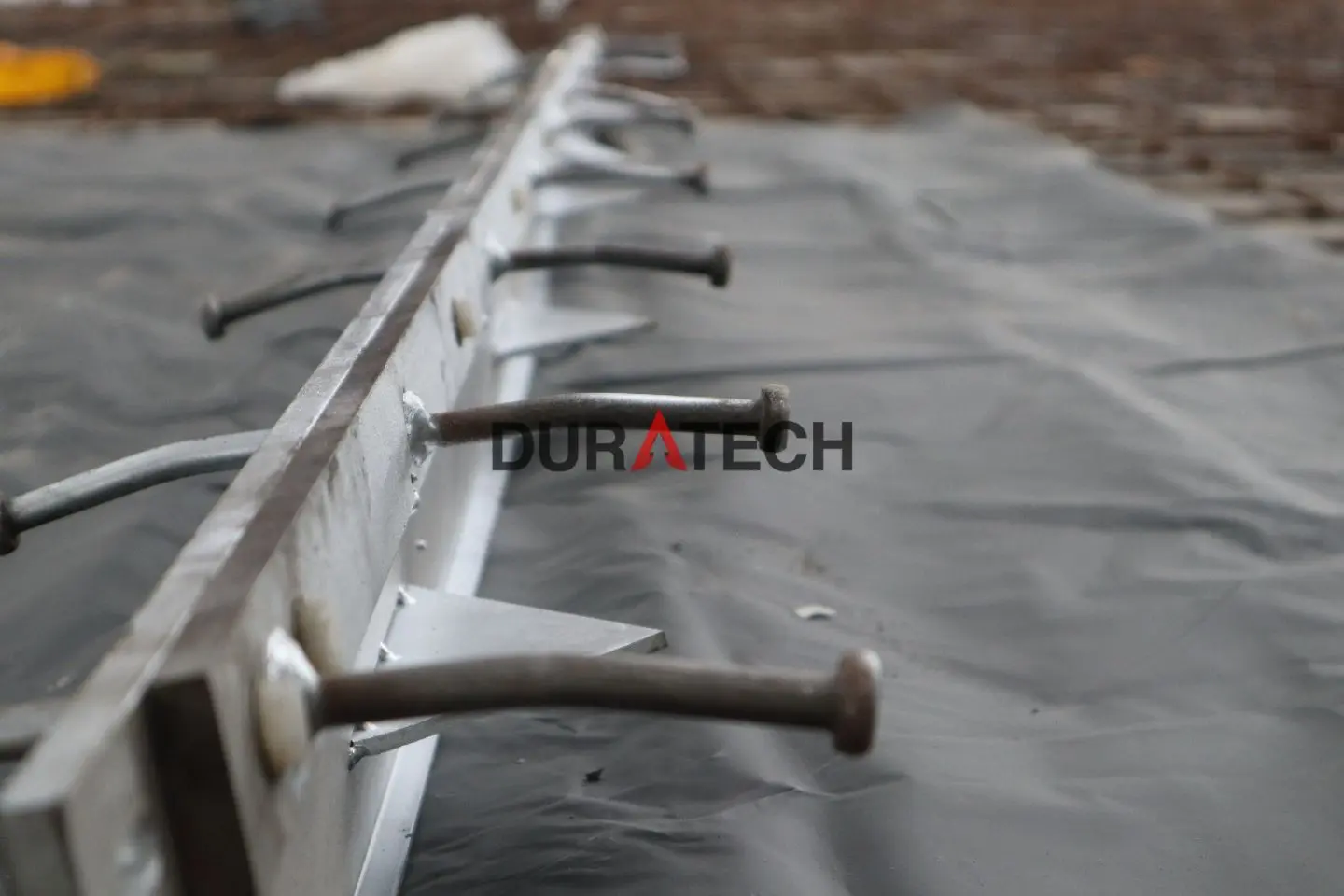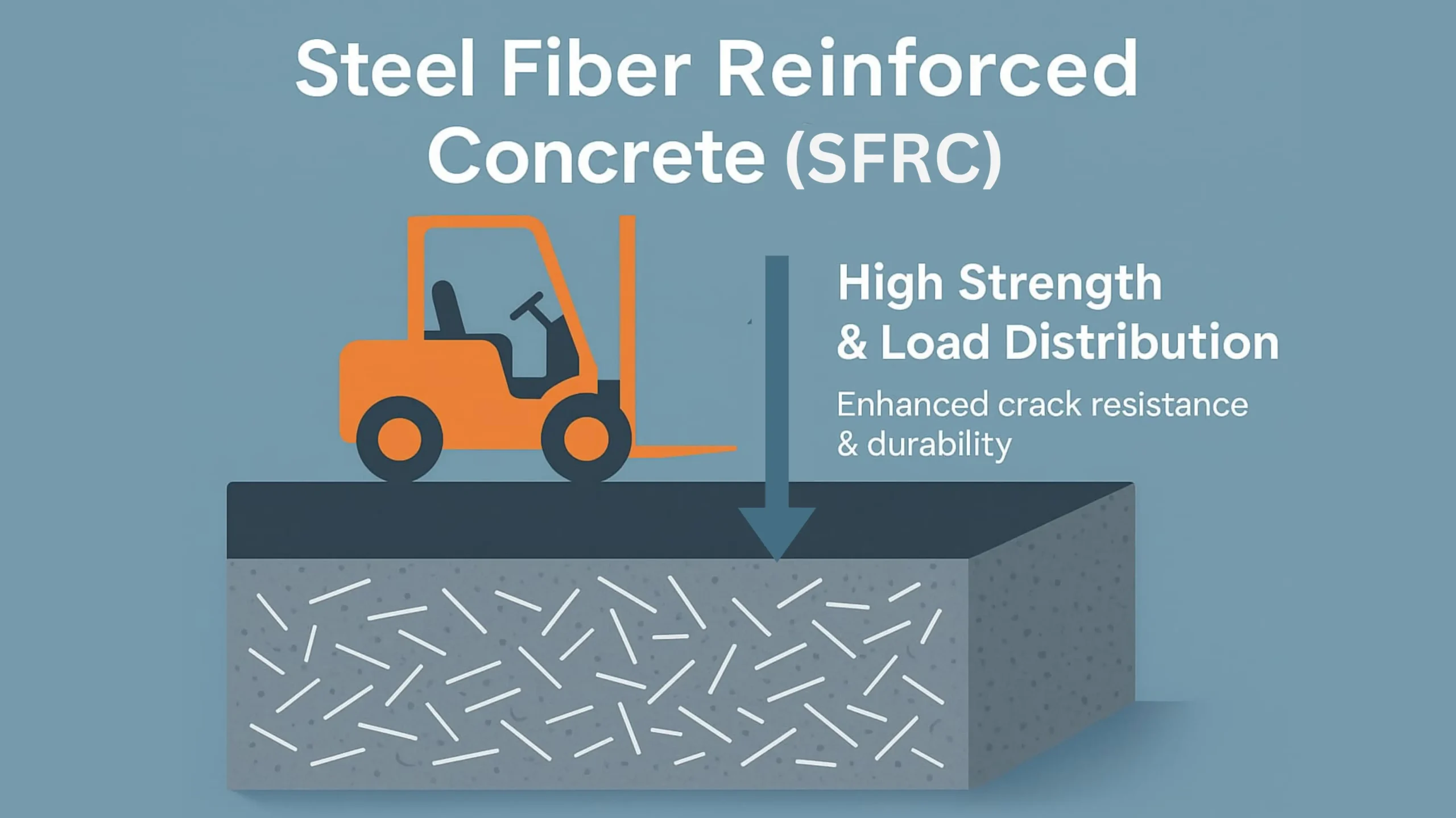
Introduction
Concrete floors are the backbone of any industrial facility, whether it’s a warehouse, logistics hub, cold storage, or manufacturing plant. These floors are constantly exposed to intense loads, frequent movement of heavy equipment, and operational stress.
While concrete is strong, it is not indestructible. The most vulnerable points in any concrete slab are the joints, the linear gaps intentionally left between slabs to allow for expansion, contraction, and controlled movement. Over time, these joints become the primary location for cracking, edge breakdown, and floor failure.
This is where armoured joints play a critical role.
In this blog, we’ll explain in simple terms:
- What armoured joints are
- Why they’re important
- How they prevent long term damage
- The key benefits they offer in high performance concrete flooring systems
What Are Armoured Joints
Imagine you’re driving a forklift across a wide warehouse. The concrete slab you’re moving on isn’t one single piece, it’s divided into large sections. These sections meet at joints, similar to seams between tiles.
Over time, the repeated impact of forklifts and trolleys rolling across these joints can damage the edges of the concrete. The result is chipped corners, cracks, and uneven levels that can affect operations, damage equipment, and create safety hazards.
Armoured joints are the solution
They are specially designed joint profiles made using preformed steel edge protection plates. These are installed in the floor slab during the concrete pouring process, ensuring both sides of the joint are reinforced with metal.
They do two important things:
- Protect the edge of the concrete from breaking down
- Allow smooth load transfer from one slab to another using dowel systems
Think of armoured joints as protective armour at the most sensitive points of your floor.

Why Are Floor Joints So Critical in Industrial Flooring
In heavy duty concrete floors:
- Joints bear the brunt of wheel impact
- Forklifts, stackers, reach trucks pass over them thousands of times a day
- Cracked joints quickly escalate into floor wide structural issues
Without proper edge protection, even the strongest concrete will eventually fail. Repairing damaged joints is costly, leads to downtime, and is often only a temporary fix.
That’s why armoured joints are not just useful, they’re essential in modern industrial flooring design.
Core Benefits of Armoured Joints in Heavy Duty Concrete Floors
1. Prevents Edge Breakage and Concrete Spalling
Armoured joints are built to absorb high impact loads. The steel edges protect the concrete at its weakest point, the joint, from:
- Breaking
- Chipping
- Spalling (surface flaking)
It keeps the floor looking neat and ensures a safer environment for both workers and equipment.
2. Reduces Maintenance and Downtime
A damaged joint often means stopping operations to repair the floor, which:
- Delays productivity
- Increases cost
- Can be disruptive in 24×7 facilities
Armoured joints reduce the frequency of repairs, meaning fewer interruptions to your operations.
3. Enhances Equipment Life and Operator Comfort
Forklifts hitting uneven or broken joints cause:
- Equipment vibration and wear
- Increased fuel or battery consumption
With smooth, level joint transitions, armoured joints make movement seamless, reducing wear on machines and ensuring a safer, more comfortable work environment.
4. Improves Load Transfer with Integrated Dowels
Armoured joints typically come with dowel bars or sleeves that connect two slabs internally. This:
- Helps distribute weight across slabs
- Prevents slab movement or differential settlement
- Maintains flatness across the entire floor
This is especially crucial for FM2 or FM3 flatness tolerances in modern logistics floors.
5. Speeds Up Construction and Increases Precision(optional)
These joints are pre-engineered and easy to align. Professional flooring contractors can:
- Install them faster during concrete pouring
- Achieve precise levels, aiding laser screed operations
- Ensure consistent joint gaps and alignment
This reduces errors and ensures long term performance.

Where Are Armoured Joints Commonly Used
- Large Warehouses and Distribution Centers
- Logistics Parks & Centers
- Cold Storage and Freezer Rooms
- Heavy Manufacturing Plants
- Aviation Hangars
- Retail Distribution Hubs
Any place where floors see repeated mechanical traffic and must perform reliably under pressure.
Conclusion: Why Armoured Joints Are a Smart Investment
Armoured joints may seem like a small component, but they offer huge long term benefits. If you’re designing or upgrading an industrial floor, including armoured joints will:
- Protect your concrete investment
- Keep your floor safe and efficient
- Ensure consistent performance under heavy duty conditions
In short, armoured joints help your floor last longer, stronger, and safer.
Need help choosing the right armoured joint system for your project
Talk to our team today for expert guidance, technical specifications, or a site specific solution tailored to your industrial flooring needs.



